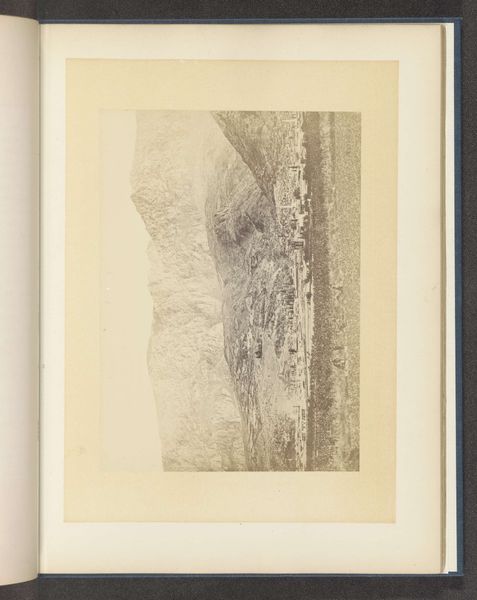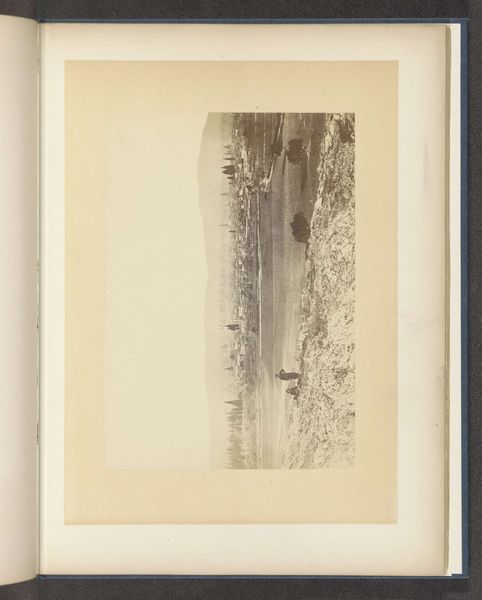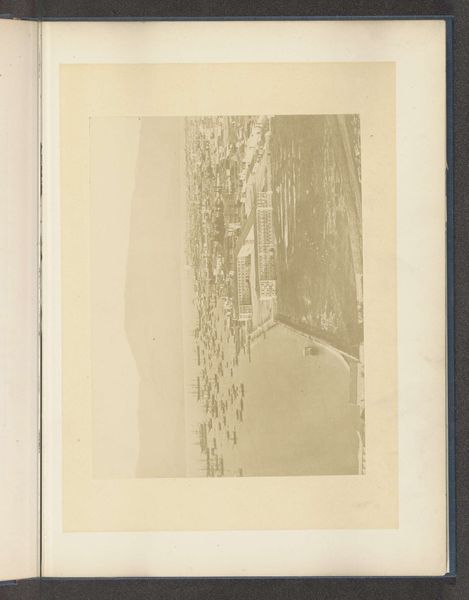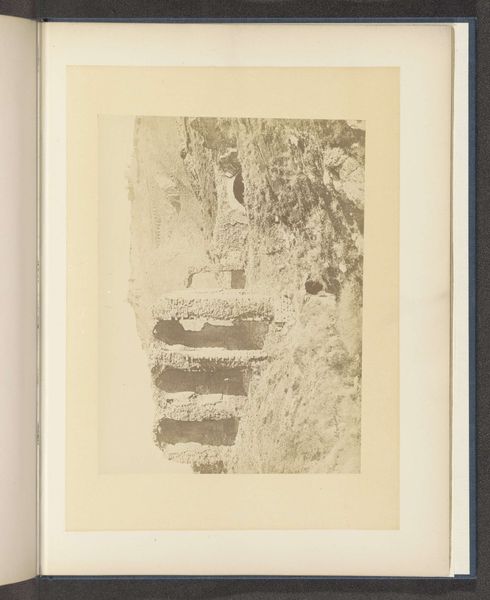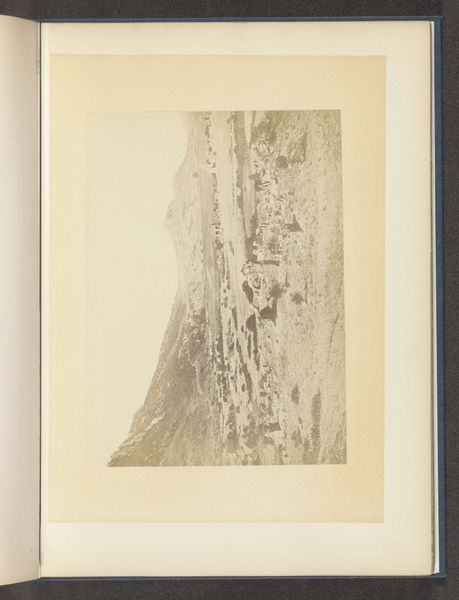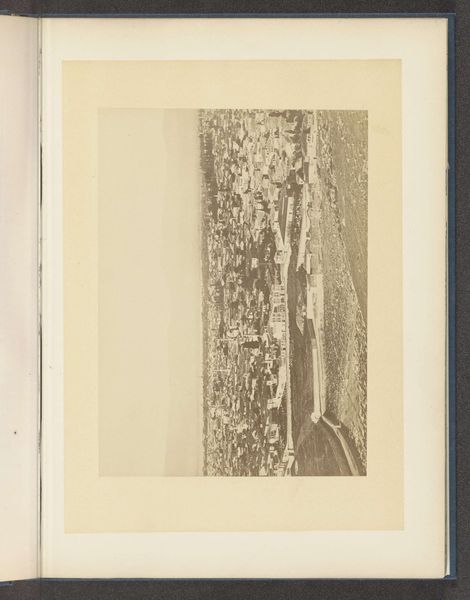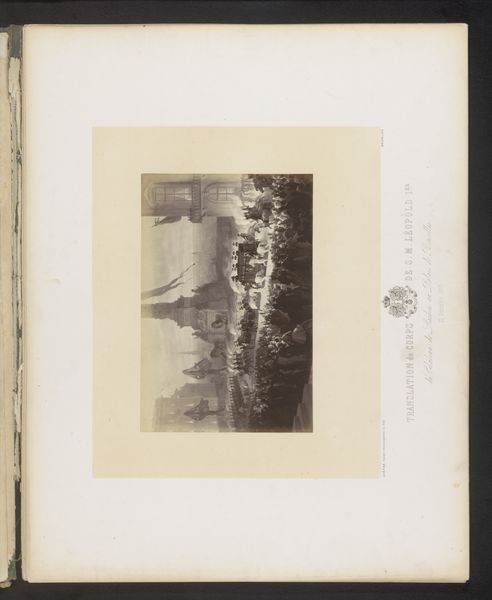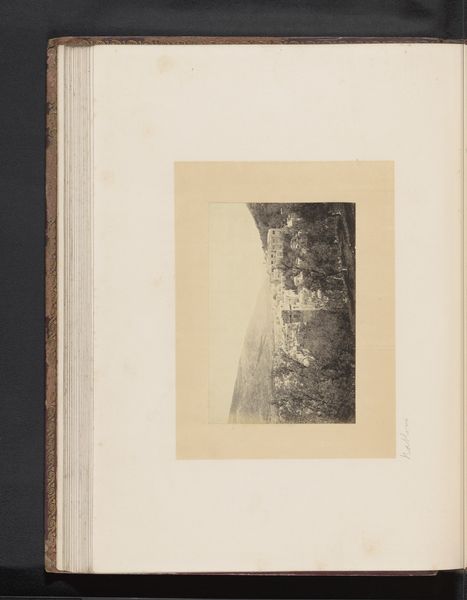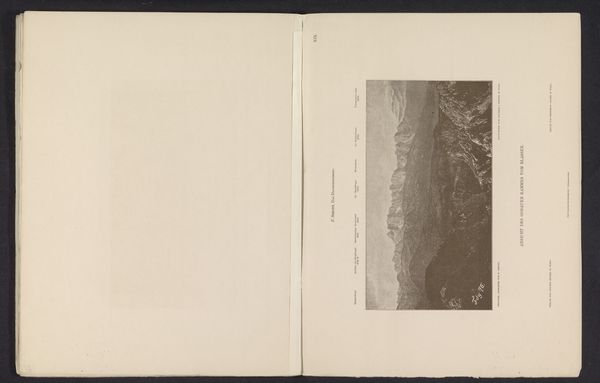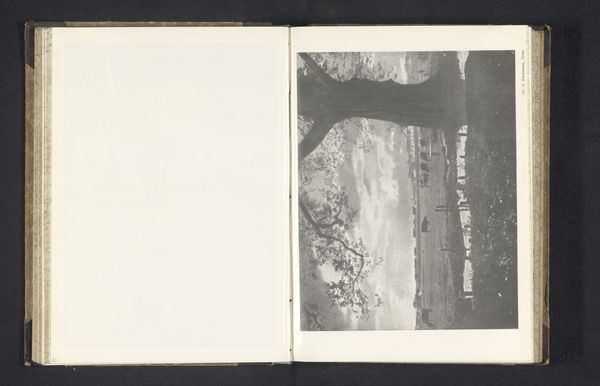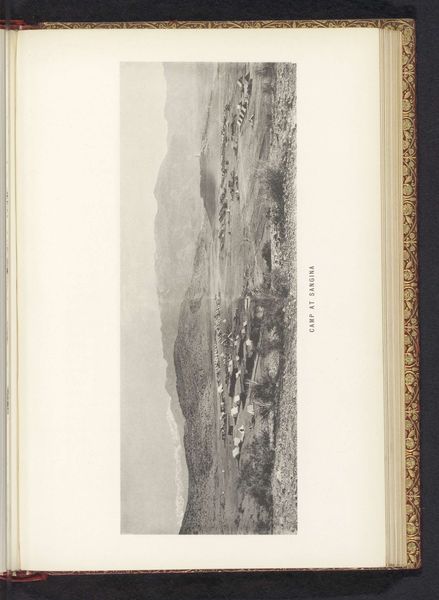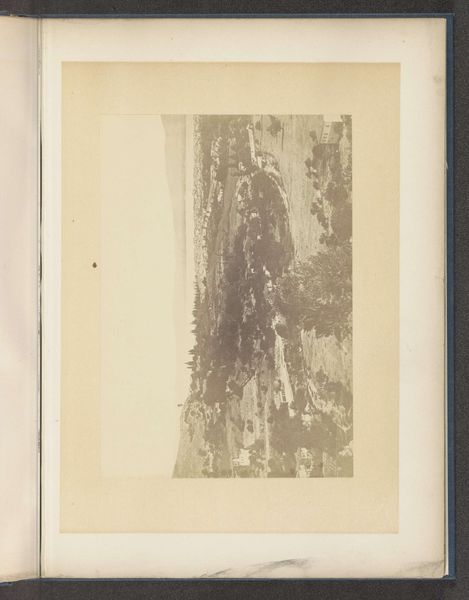
Dimensions: height 128 mm, width 177 mm
Copyright: Rijks Museum: Open Domain
Curator: This is "Gezicht op de ruïne van een kerk te Sardis," or "View of the Ruin of a Church in Sardis," a gelatin silver print by A. Svoboda, dating from before 1869. Editor: My first impression is one of ghostly beauty, like looking at a fading memory. The monochrome tones create a powerful sense of historical distance. Curator: Absolutely. Consider the implications of photographing a ruin. Svoboda isn’t just capturing a physical place but is also engaging with the politics of empire and the narrative of civilizations in decline, perhaps reflecting on shifting power dynamics and colonial perspectives. Editor: And look at the visible texture. It feels very hands-on, a real artifact. The gelatin silver process itself is key; how the light interacts with those silver particles suspended in gelatin. It’s a chemical transformation turned into a preserved image, recording light and shadow across material. It brings the labor of image making to the fore. Curator: Indeed. One might read this ruin through the lens of postcolonial theory, examining how such images contribute to the Western gaze upon the East. We are invited to consider how photography has been used to document and sometimes romanticize the "fall" of non-Western societies, shaping perceptions and reinforcing historical narratives. Editor: Thinking materially, where was this photograph made? The physical constraints of traveling with photographic equipment at that time… each print was labor-intensive, embedded with a sense of location and process that a digital image just doesn’t have. How does that making affect its circulation, audience, value? Curator: It raises important questions about the politics of representation inherent in landscape photography of this period, forcing us to confront our own assumptions about history, progress, and the "other." Editor: It does! It highlights the crucial interplay of materials, technique, and the artist's social context in shaping not just the image, but also its historical significance and reception. Thank you for providing such valuable context! Curator: My pleasure! Seeing it from a material perspective really illuminates its lasting impact and its intersectional implications.
Comments
No comments
Be the first to comment and join the conversation on the ultimate creative platform.
